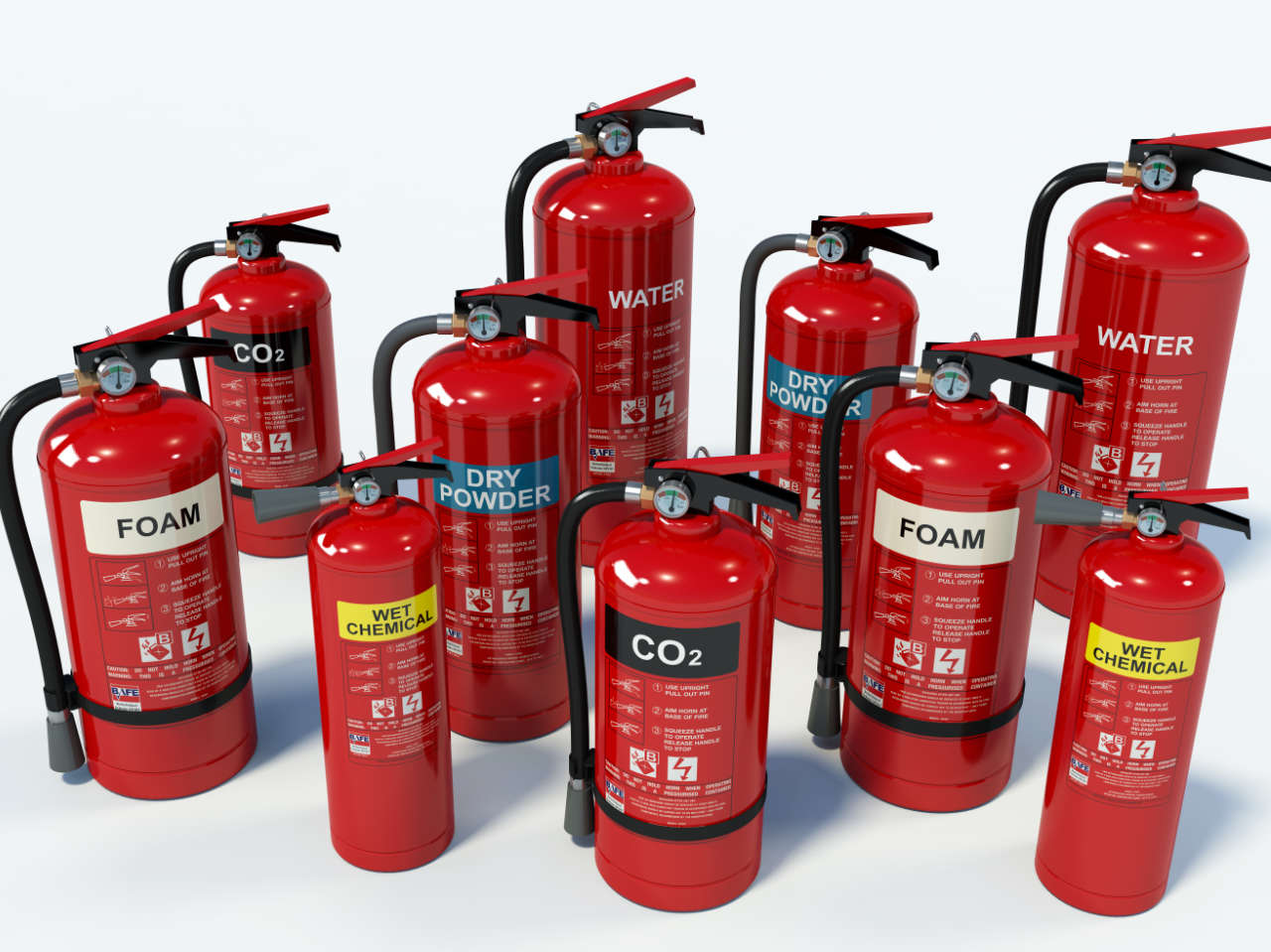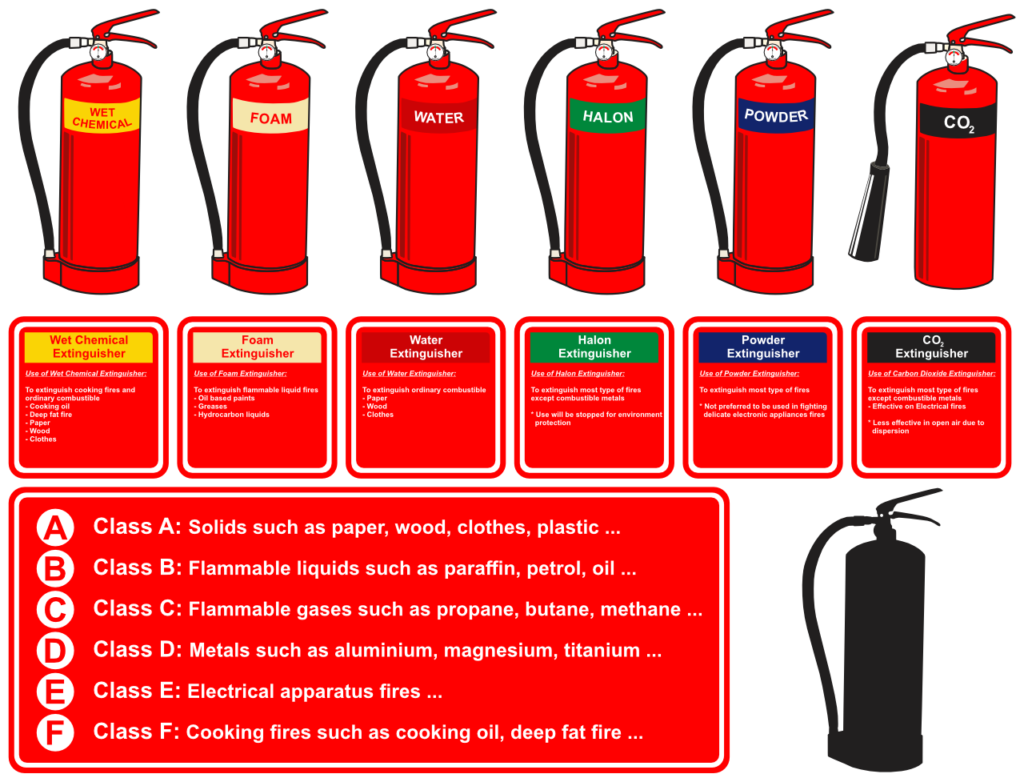
You can listen to an audio version of this blog here:
Fire extinguishers are vital to fire safety in the workplace. This guide explains the types of fire extinguishers and when and how to use them.
Every year there are about 22,000 workplace fires in the UK. A significant proportion of these fires is caused by human error, including misuse of electrics and other equipment, and inappropriate storage of combustible waste. Arson and faulty electrical equipment are other major causes of workplace fires.
The impact of a fire in the workplace can be devastating. Employees can face physical and emotional effects, and companies can lose valuable data and equipment and suffer severe financial losses. The total cost of fires to the UK economy runs into billions of pounds each year.
Different types of fire bring different risks, so it is essential that you minimise the chances of a fire and are prepared should the worst happen.
Choosing the right type of fire extinguisher
The type of fire extinguisher that should be used depends on the class of fire. Using the wrong type of extinguisher can have no effect or make a fire worse, so it is essential to identify the source of fuel for a fire before attempting to tackle it.
The categories of fire in the UK and Europe are:
- Class A – solid materials such as wood, paper or textiles.
- Class B – flammable liquids such as petrol, diesel or paint.
- Class C – flammable gases such as propane, butane or methane.
- Class D – metals such as magnesium, titanium or aluminium.
- Electrical – live electrical equipment such as computers and televisions. (Not recognised as a separate class of fire in Europe but a type you need to look out for).
- Class F – cooking oils such as vegetable oil, olive oil or butter (typically used for deep-fat fryers).

Types of fire extinguishers
There are six main types of fire extinguishers:
- Water
- Water mist
- CO2
- Powder
- Wet chemical
- Foam
Each type can be identified by the text and colours of the label, and in some cases, by their hoses.
Choosing the correct fire extinguisher
Each type of fire extinguisher contains a different extinguishing agent which makes it suitable for tackling specific types of fires.
Water
This type of fire extinguisher is red with the word ‘water’ in white text.
Use: Water extinguishers dispense water at high pressure and should only be used to tackle class A fires involving solid materials such as paper, wood, plastics and coal.
Water mist
This type of fire extinguisher is red and has the words ‘water mist’ in red text on a white label.
Use: Dry water mist can be used on class A, B and C. They can be used on live electricity up to 1,000 volts.
Carbon dioxide (CO2)
Carbon dioxide extinguishers are red with ‘CO2’ in white text on a black label. They have a large cone at the end of the hose, which is different from other extinguisher hoses. Do not hold the cone as it could freeze your skin. Frost-free cones are available.
Use: They can be used on class B and electrical fires.
Powder
Powder fire extinguishers, which release powder to smother the fire, are red with ‘powder’ in white text on a blue label. Underneath the blue label is ‘ABC powder’.
Use: They can be used for class A, B and C fires. They can also be used for electrical fires but because they don’t cool the fire, it could re-ignite.
Powder extinguishers can be messy, cause breathing difficulties, reduce visibility and damage equipment. They should not be used in confined spaces unless mitigated by a health and safety risk assessment.
M28 and L2 are special types of powder extinguishers. They also have ‘powder’ in white text on a blue label, but underneath the label, it says M28 or L2. M28 and L2 operate differently to other extinguishers so separate training should be provided.
Use: They are designed for class D fires involving metals. L2 extinguishers can be used on all types of metal fires, but M28 extinguishers cannot be used on fires involving lithium.
Warning: Do not use M28 and L2 extinguishers to tackle any other type of fire.
Wet chemical
Wet chemical fire extinguishers are red with ‘wet chemical’ in red text on a yellow label.
Use: They are used for class F fires. When operated, a soap-like chemical is released as a spray which stops the flames and cools the oil. This type can also be used to tackle class A fires, but they are not as effective as water extinguishers.
Foam
This fire extinguisher is red with ‘foam’ in red text on a cream label. Like powder extinguishers, the foam smothers the fire to put it out.
Use: They can be used on class A and B fires.
Please note that AFFF firefighting foam (aqueous film forming foam), is being phased out and will be banned from 4th July 2025. To find out about alternative fire extinguishers, read our article Toxic AFFF firefighting foam – what you need to know.
How to use a fire extinguisher
How to use a fire extinguisher should be part of fire safety training. An easy way to remember how to operate an extinguisher is the acronym PASS which stands for pull, aim, squeeze and sweep.
- Pull: Pull the pin to break the seal and activate the extinguisher.
- Aim: Aim low and point the hose at the base of the fire. Do not hold the horn on a CO2 extinguisher as it could damage your skin.
- Squeeze: Squeeze the handle to release the extinguishing agent.
- Sweep: Sweep the hose back and forth at the base of the fire until it is out.
Are you looking for fire safety training?
Improve workplace safety and help ensure your business complies with fire safety regulations, with our comprehensive online fire safety courses.
We offer Fire Safety Training for all employees and Fire Marshals and Wardens Training for those responsible for managing fire safety and co-ordinating evacuations.
Our IOSH and CPD Approved courses have been developed by fire safety consultants who have extensive experience in the field, ensuring employees gain vital fire prevention knowledge and know exactly how to respond in an emergency.

Rob Sherman
Director of Fire Safety
